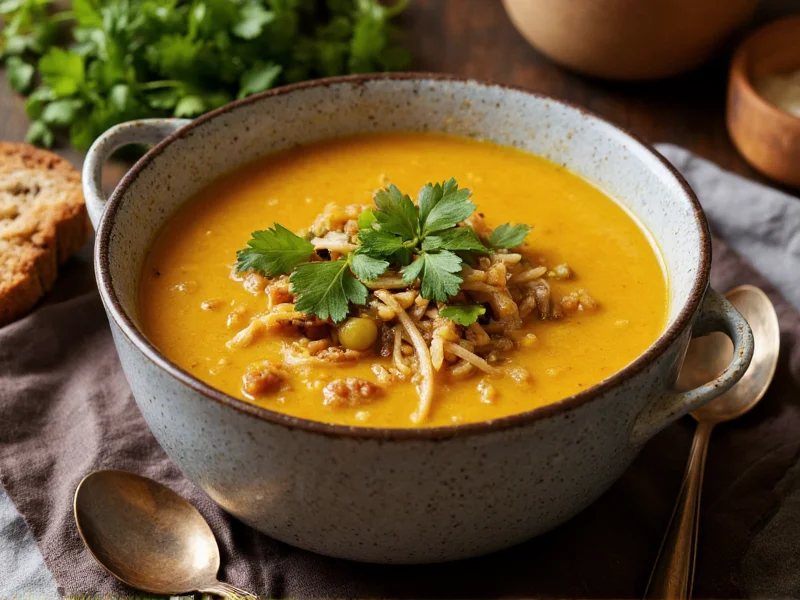The Heartwarming Legacy of Irish Soup Traditions
Irish cuisine centers around resourcefulness and comfort, with soups playing a vital role in the island's food culture. Unlike the common misconception that Irish food lacks variety, traditional Irish soups showcase remarkable depth through humble ingredients transformed by time-honored techniques. These dishes emerged from Ireland's agricultural landscape and maritime traditions, where farmers and fishermen created nourishing meals from readily available provisions.
Defining Characteristics of Authentic Irish Soup
What makes a soup authentically Irish? Three key elements distinguish genuine Irish soup recipes from imitations:
- Ingredient authenticity - Using Ireland's native produce like Carlow blue cheese, Wexford strawberries (in sweet soups), and Connemara seaweed
- Cooking methodology - Slow simmering techniques developed when cooking over peat fires
- Cultural context - Dishes created for specific occasions like Lent or harvest festivals
| Traditional Irish Soup | Key Ingredients | Regional Origin | Best Served |
|---|---|---|---|
| Dublin Coddle | Irish bacon, sausage, onions, potatoes | Dublin | Winter evenings |
| Seafood Chowder | Smoked fish, mussels, potatoes, cream | West Coast | Year-round |
| Colcannon Soup | Kale, potatoes, scallions, milk | National | St. Patrick's Day |
| Boxty Soup | Potato pancakes, leeks, broth | Midlands | Spring |
Common Misconceptions About Irish Soup
Many believe Irish stew qualifies as Irish soup, but traditional Irish stew is thicker and contains larger meat portions than soup preparations. Authentic Irish soups maintain a broth-like consistency that showcases the delicate balance of flavors. Another misconception involves the use of Guinness in all Irish dishes—while popular in modern adaptations, traditional Irish soups rarely incorporated beer due to historical cost constraints.
Mastering Traditional Irish Potato Soup
For an authentic Irish potato soup experience, follow these time-tested principles:
- Use floury potatoes like Rooster or Kerr's Pink that break down slightly during cooking
- Begin with a base of fried Irish back bacon (not American-style bacon)
- Add potatoes to cold water rather than boiling liquid to ensure even cooking
- Incorporate fresh herbs like chives or parsley at the very end
- Serve with traditional Irish brown soda bread for dipping
This approach to traditional Irish potato soup creates a velvety texture without requiring cream or thickeners—a testament to Ireland's "less is more" culinary philosophy. The best authentic Irish soup recipes rely on ingredient quality rather than complex techniques.
Cultural Significance Beyond the Bowl
Irish soup traditions reflect the country's social history. During the Great Famine, soup kitchens provided life-saving nourishment, embedding soup in Ireland's collective memory as both sustenance and compassion. In contemporary Ireland, community soup initiatives continue this legacy, with organizations like Crosscare operating meal programs that serve thousands daily.
Understanding the history of Irish soup reveals how these simple preparations sustained communities through difficult times while maintaining culinary identity. Modern Irish chefs now reinterpret these traditions using premium local ingredients, creating elevated versions that honor heritage while appealing to contemporary palates.
Perfecting Your Irish Soup Technique
Whether preparing Dublin coddle recipe variations or coastal Irish seafood chowder, these professional tips ensure authentic results:
- Layer flavors slowly - Irish cooking emphasizes gradual flavor development rather than quick fixes
- Respect ingredient proportions - Traditional recipes maintain specific ratios for balanced results
- Use proper salt timing - Add salt after potatoes soften to prevent toughening
- Finish with fresh elements - A splash of milk or cream added off-heat preserves delicate flavors
These techniques transform simple ingredients into extraordinary Irish soup cultural significance experiences that connect modern cooks with centuries of culinary tradition. When exploring how to make Irish soup, remember that patience yields the most authentic results.
Frequently Asked Questions
What's the difference between Irish stew and Irish soup?
Irish stew features larger meat chunks and minimal liquid, creating a thick, spoon-standing consistency, while traditional Irish soups maintain a broth-like texture with smaller ingredient pieces. Authentic Irish stew uses mutton rather than beef and contains no carrots—a common American addition not found in traditional recipes.
Can I make authentic Irish soup without specialty ingredients?
Yes, authentic Irish soup relies on basic pantry staples. Traditional recipes use potatoes, onions, and water or simple broth. The key is technique rather than rare ingredients—proper slow simmering and ingredient layering create authentic flavor. For seafood chowder, frozen fish works well when fresh isn't available, as Irish coastal communities historically preserved fish through salting.
Why don't traditional Irish soups contain tomatoes?
Tomatoes arrived in Ireland relatively late (18th century) and never became staple ingredients in traditional soup recipes. Ireland's cool climate isn't suitable for tomato cultivation, and historical Irish cooking developed without them. Authentic Irish soups derive richness from potatoes, dairy, and slow-cooked meats rather than acidic tomato bases common in other cuisines.
How did potatoes become central to Irish soup traditions?
Potatoes became Ireland's primary crop in the 18th century due to their high yield in Ireland's soil and climate. When the Great Famine devastated potato crops in the 1840s, soup kitchens relied on potato-based preparations to feed the hungry. This cemented potatoes' role in Irish culinary identity, with soup recipes evolving to maximize this versatile ingredient's nutritional value and texture.
What's the proper way to store and reheat Irish soup?
Authentic Irish soups develop better flavor when stored properly. Cool soup completely before refrigerating in airtight containers for up to three days. When reheating, do so gently over low heat without boiling to preserve delicate flavors and textures. Many traditional Irish soups like Dublin coddle actually improve after 24 hours as flavors meld—a practice born from historical cooking methods where pots remained on hearths for days.











 浙公网安备
33010002000092号
浙公网安备
33010002000092号 浙B2-20120091-4
浙B2-20120091-4